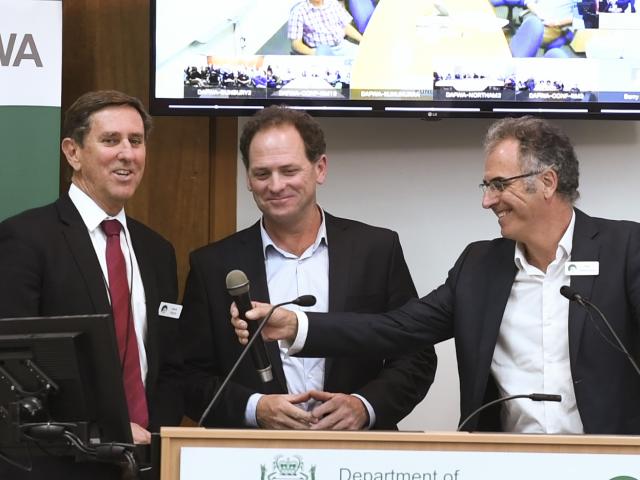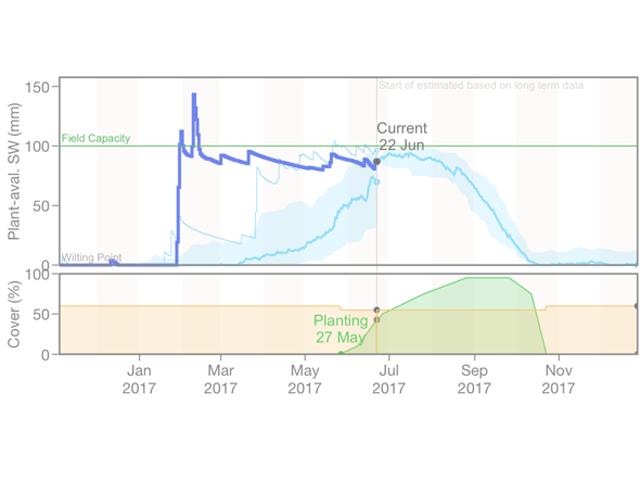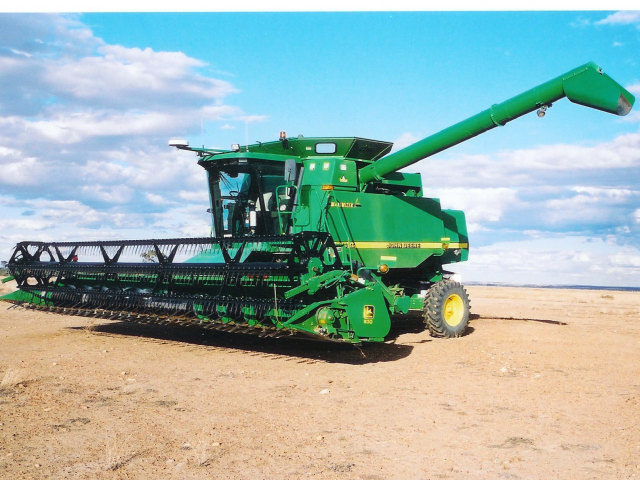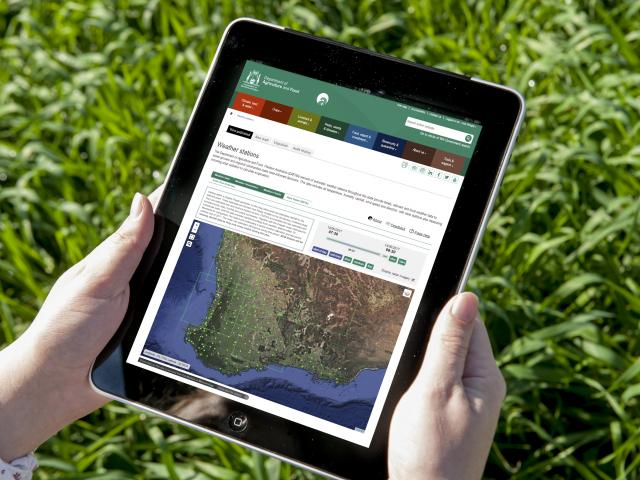Bigger department benefits agriculture
Western Australia’s agriculture and food sector is set to benefit from the State Government’s decision to amalgamate key agencies working to support our primary industries and regions.
From 1 July, the departments of Agriculture and Food; Fisheries; and Regional Development are joining with the staff of the nine Regional Development Commissions to form the new Department of Primary Industries and Regional Development (DPIRD).
These major structural changes are happening across the public sector to create more collaborative departments focused on whole-of-government objectives to deliver services in a more efficient and effective way.
Ralph Addis has taken on the role of acting Director General of DPIRD to help us build an organisation we can all be proud of, and achieve more together than we can as individual agencies.
Ralph was the Director General of the Department of Regional Development. He hails from a family farm near Cranbrook and has a first-hand appreciation of the challenges of modern agribusinesses.
The Department of Agriculture and Food, Western Australia's (DAFWA's) former acting Director General Mark Webb is moving on to lead the new Department of Biodiversity, Conservation and Attractions. Mark has made a major contribution to the department and the sector over the past 14 months.
While our new combined department officially starts operating from 1 July, with all staff brought under the one banner, the full transition of functions and services will take some time longer.
A project management team, including representatives from DAFWA, has been established to guide this transition.
Mark Sweetingham have been appointed as DPIRD’s Deputy Director General for Agriculture and will help navigate this latest evolution of the department.
Given Mark's previous role as Executive Director of Grains Research and Development Transformation, he is well aware of the pressures and opportunities facing the WA agriculture and food sector and is committed to ensuring we are well equipped to take our sector forward.
Mark has expressed his excitement about the future of agriculture and the synergies and opportunities to be generated by working together in a bigger more collaborative department.
During this transition process it is ‘business as usual’ for the agriculture and food staff, who continue to work with the expertise and passion for which they are renowned.
Our valued partnerships remain strong and our research and development activities will stay on track with universities, grower groups and organisations, such as the Grains Research and Development Corporation.
DAFWA has had many incarnations over the past 124 years, to enable it to support the continued development of agriculture and food in Western Australia to the sophisticated, modern agribusinesses that we have today.
This is yet another chapter in that proud history, which will enable us to tap into the skills and resources of other aligned departments and pursue significant activities that advance the capability and prosperity of the sector.
We invite all stakeholders to join us along this journey and to keep the lines of communication open so we can build an innovative, relevant and robust department that will meet the needs of the agriculture and food sector for generations to come.
For more information visit the department amalgamation webpage on the DAFWA website.
Department helps agricultural businesses to navigate 2017 season
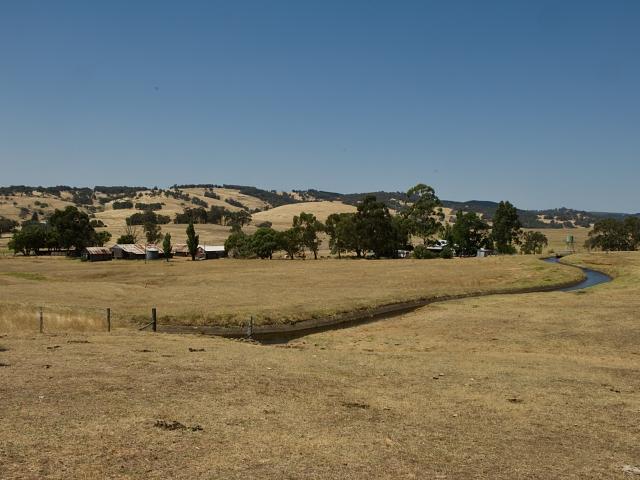
Department of Agriculture and Food, Western Australia (DAFWA) officers throughout the grainbelt and adjacent areas are working to support agricultural businesses affected by below average rainfall.
While good levels of stored summer soil moisture has been topped up by autumn rains on the south coast and parts of the Great Southern, areas in the northern and north-eastern agricultural area and the lower Great Southern are experiencing well below average rainfall.
The image below shows total WA rainfall from 1 April to 25 June 2017.
The department’s Statistical Seasonal Forecasting (SSF) system's June seasonal outlook predicts below average rainfall for the majority of the South West Land Division for winter and spring.
The SSF indicates a 0-40% chance of exceeding median rainfall from June to August for the majority of the grainbelt, in the decile 2-3 range, based on a poor to good predictive skill, with the exception of Ravensthorpe and the western part of the Esperance Shire, which has a higher chance of 40-60% of exceeding average rainfall, in the likely 4-7 decile range.
The longer term outlook for June to October is also for a 0-40% chance of exceeding median rainfall, in the 2-3 decile range, across the majority of the South West Land Division, based on a 50-75% consistent predictive skill.
Department officers from across the grainbelt are liaising with local grower groups, consultants and farming organisations to ensure agribusinesses receive the support they require.
A Season 2017 webpage is available on the department’s website that harnesses a vast range of information to assist landholders to navigate the season ahead.
It includes useful information on crop agronomy, livestock management, farm budgeting and health and financial information.
Climate and weather tools
The department’s website has several climate and weather tools to assist decision making, including:
- Weather stations - real time data form more than 170 weather stations around the State, including weather summaries, charts and Doppler radar rainfall and wind images
- Seasonal climate information - including rainfall forecasts, plant available soil moisture maps, potential yield calculator and frost risk maps
- Rainfall to date tool - graphs tailored to location
- Soil water tool – graphs showing soil water accumulation
- Potential yield tool - calculates potential wheat yield to location
- Extreme weather events tool – maps real time information about frost and heat events.
Cropping
The below average rainfall conditions have already had an impact on cropping programs and many grain growers are modifying their plans to optimise crop potential.
The department has undertaken modelling to identify likely impact from delayed emergence of wheat and canola crops so growers can evaluate whether other options need to be considered for these paddocks.
There has also been research on the value of reseeding canola crops.
In addition, work has been done on breakeven yields for wheat and canola.
Livestock
The department has been monitoring the situation to assist livestock producers to make informed decisions about feed budgeting, stocking rates and opportunities to capitalise on solid market conditions.
Livestock feeding has been a priority, with Pastures from Space observations showing low amounts of Food on Offer (FOO), across much of the grainbelt.
Many livestock producers have already commenced supplementary feeding and feed budgeting will be essential if dry conditions persist in coming months.
The department has a number of tools and calculators to assist sheep grazing management.
Department officers report livestock across the regions are currently in good condition.
Support Services
It seems likely that 2017 will be a variable season for much of the grainbelt.
Good communication and social support will be essential to help each other through the months ahead.
Services are available to assist people through this difficult period:
- WA rural health, financial and information support directory
- Rural Financial Counselling Service WA or freecall 1800 612 044 - free financial counselling services to assist primary producers
- Regional Men’s Health Initiative or call (08) 96902277
- Farm Household Allowance or call 13 23 16 – a household support payment from the Australian Government
- Farm Business Training or 1800 198 231 – targeted training to improve business management provided via the department.
The Season 2017 webpage will be updated with relevant, useful information as the season progresses.
Protect paddocks from wind erosion
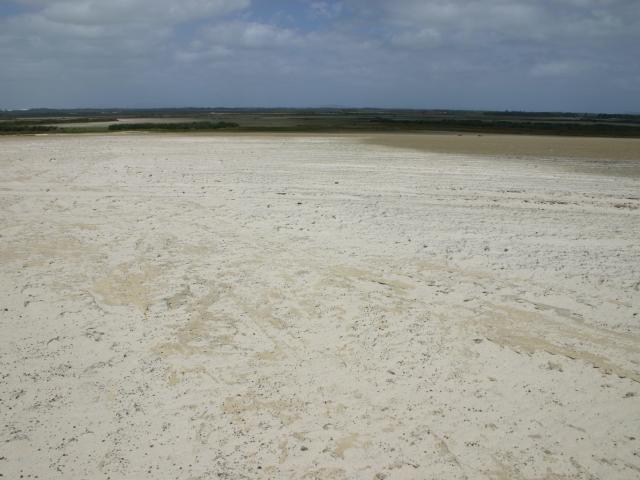
Landholders who have paddocks with low levels of ground cover have been encouraged to take action sooner rather than later to minimise the impact of wind erosion.
There have already been reports from across the grainbelt of wind erosion, as a result of below average winter rainfall.
Despite recent rainfall over parts of the grainbelt, the prospect of below average rainfall in coming months meant there would be a high risk of wind erosion over summer and beyond.
While there is little landholders can do to protect paddocks that are ‘already blowing’, there are options to reduce wind erosion risk in paddocks with lighter soil types.
Avoid disturbing at risk soils
Keeping the soil stable and anchored to prevent topsoil from being blown away will reduce damage in this year and prevent yield reductions for future crops and pastures.
Keeping machinery, including vehicles, off paddocks and removing stock will prevent surface soil from becoming detached.
Livestock considerations
Livestock feed and water management will be critical in coming months, with many growers already hand feeding stock.
Producers will have to weigh up the cost of supplementary feeding against the increased risk of erosion and its impact on future paddock potential.
Department of Agriculture and Food, Western Australia research has shown ground cover of 50% or more by the beginning of autumn is required to minimise the impact of wind erosion, as well as water erosion when it rains.
The department encourages producers to plan flock or herd management for the next 12 months, as the spring forecast for most of the grainbelt is for below average rainfall.
Producers will need to be mindful of stocking rates and feed budgeting to manage paddock grazing pressures and ensure there is at least 600 kilograms per hectare of dry matter on pasture paddocks.
Options to keep stock off paddocks include feeding them in confined paddocks or feedlotting, while growers could also consider the cost-benefit of agisting or selling stock before both paddocks and stock lose condition.
Cropping considerations
Growers considering reseeding paddocks to provide ground cover over coming months or turning cropped paddocks over to feed should also be aware of the erosion risk, as well as any herbicide residues.
The decision to reseed should take into account the local season forecast and paddock conditions.
Before reseeding, growers are encouraged to inspect sown paddocks for any viable seed that may germinate with the next rain. Wetting up small patches to check for germination may save a lot of expense.
It is important to note that canola crops sown with atrazine or propyzamide have withholding periods that are longer than cereals, so it is best to check before opening the gate to stock.
Weed management
Weed management also poses a dilemma.
While weeds will help to stabilise the soil and cutting the cost of herbicides may seem an attractive option, the long term cost of not spraying out weeds could be more detrimental. It would be best for landholders to discuss their options with their local agronomist.
Spreading clay or gravel
Small bare areas, such as sheep camps, gateways and around watering points, in otherwise well covered areas can also lead to severe blowouts.
These areas can be protected by binding spray, claying or laying gravel, old hay or straw to give full cover.
For larger areas of at risk sandy soils one of the most effective but also a more expensive option is to spread clay-rich subsoil or gravel or gravelly loam using a heavy duty multi-spreader.
The subsoil needs a clay content of 30% or more. Rates of 50-75t/ha are often adequate to prevent erosion but rates of 75-120t/ha or more may have lasting benefits to reduce topsoil water repellence, depending on the quality of the subsoil used.
At these rates there is still minimal need for deep incorporation of the clay leading into next season and the action of the seeder or a scarifier would likely be adequate.
Spreading the material through a multi-spreader is the ideal option for evenness of spread, cover and speed but other more intensive approaches could be used for smaller areas.
At the lighter rates of clay it would still be important not to traffic the soil too much – until it is wet and a cover crop can be seeded.
This approach is expensive but may still be helpful to target or prevent patches at risk of blow-out which could be an ongoing problem for many years to come and difficult (and very expensive) to rehabilitate.
When protecting sands from wind erosion it will often be necessary to prioritise areas. Identify and target bare sands that are exposed and at risk of becoming a blowout.
Where options are limited, avoid disturbing the soil surface and monitor the site after strong wind events.
Long term investments to mitigate wind erosion include planting trees as windbreaks to reduce wind speed and applying clay subsoil or loamy gravel to at-risk areas.
For more information contact David Bicknell, Senior Development Officer, Narrogin, +61 (0)8 9881 0228.
Stored soil water is important in 2017
Stored soil water is likely to make a significant contribution to crop yield this year due to the high January and February rainfall and the low May and June rainfall.
Department of Agriculture and Food, Western Australia (DAFWA) Development Officers are using the Soil Water App (SWApp) to assess the impact of stored water on this year's crop performance.
These officers are a part of the "Building capacity for crop protection and agronomy in the Western Region" (Regional Research Agronomy) project that is jointly funded by DAFWA and Grains Research and Development Corporation (GRDC).
The SWApp, developed by the University of Southern Queensland and GRDC, is a new, simple, soil water app designed to help farmers and consultants track plant available water in their paddocks.
The app is user friendly and capable of providing farmers and advisers with an estimate of plant available water in their soil during fallow and early crop phase.
It is available free from the App Store and is suited to iPhone and iPads at this stage.
The app uses the modelling routines used in complex daily water balance models such as Howleaky and ApSim.
How it works
Once the app is downloaded on to your iPhone or iPad, the user simply defines some inputs from drop down screens. These include:
- Creating a new site by providing property name and paddock name
- Selecting the closest Bureau of Meteorology weather station (e.g. Northam)
- Select a soil type from a list with varying plant available water capacity (PAWC). Soils with a higher PAWC will provide greater capacity to store water and will give high grain yields (e.g. sand over light clay with PAWC of 100mm).
- Select the starting period or when the previous crop was harvested and the ending period or when the current crop will be harvested (1 November 2016 and 2017)
- Select the starting PAWC (e.g. 0%, because the previous crop has most likely used all of the soil water).
- Select the fallow/crop type (e.g. wheat sown 27 May 2017 with maturity date of 25 September).
- Select stubble cover during fallow and crop, if unsure select 60%.
- Save the settings, the app will access weather data and predict your soil water.
Using the example shown in Figure 1, we can see the January - February rains increase the soil water content to field capacity.
Since February there has been little follow-up rain, but because the soil had no weeds, there is still significant stored soil water.
Currently, at Northam the soil is at 82% of capacity (PAWC), equivalent to of 82mm (Figure 1).
The water balance from 04/11/2016 to 22/06/2017:
Rainfall 318mm
Evaporation 105mm
Transpiration 13mm
Runoff/drainage 35/83mm (from the heavy falls in the summer)
The user can tap on a water balance table to see estimates of future water balance (22/06/2017-28/12/2017) components.
Rainfall 239mm, being the rainfall site long term average
Evaporation 101mm
Transpiration 157mm
Runoff/drainage 0/27mm
Hence, growing season transpiration is 13mm + 157mm = 170mm
Growing season transpiration can be multiplied by water or transpiration efficiency which for a soil without any constraints in 20kg/mm/ha.
Therefore the potential yield for this soil type is 3.4t wheat/ha.
A nice aspect of the app is that it allows you ask questions on how the seasonal conditions are impacting on the soil water balance.
For example what if the crop was sown on sown 27 May 2017 but did not emerge until the 14 June 2017? What is the effect on soil water balance?
It only takes a couple of clicks to explore impacts of soil type or start condition changes on results, which can be compared by swiping between screens.
How DAFWA is integrating the information
The Regional Research Agronomy project is using local rainfall collected from a rain gauge which has Bluetooth capabilities.
This local rainfall data is added by selecting - add local rainfall.
These Bluetooth rain gauges linked to the SWApp are at several locations across the wheatbelt, on various soil types, including:
- Salmon Gums – shallow sandy loam
- East Wickepin - clay loam
- South Stirling Primary School – sand over light clay
- Katanning – sandy loam
- Merredin – loamy clay
- Tardun – red loam
The advantage of the Bluetooth rain gauges is that rainfall data at the local rainfall site is updated automatically, can be share with other users and requires less frequent visits to the rain gauge as these gauges store data.
It also requires less frequent visits to the rain gauge because it has the capacity to store the data.
The Regional Research Agronomy project is also using a series of focus paddocks to engage grower groups and growers with regionally important issues.
This involves monitoring a paddock at zone scale to observe changes over three growing seasons.
Activities include:
- measuring soil moisture, nutrition and crop establishment
- monitoring the paddock for disease, pests and weeds throughout the season
- measuring productivity in order to track seasonal conditions
- determining the constraints that are present
- examining crop response to management options
- validating decision support tools such as the Soil Water App.
More information can be found at the Soil Water website or contact David Freebairn, Soil Scientist, University of Southern Queensland on +61 (0)7 3161 8120.
For more information on the Soil Water App or the Regional Research Agronomy project please contact Stacey Hansch, Development Officer, Northam on +61 (0)8 9690 2168.
The Regional Research Agronomy project is also mentioned in Article 5 "New Development Officers to Build Capacity in Grains Research and Development" of this edition of AgMemo.
Condition score sheep flock crucial for 2017 season
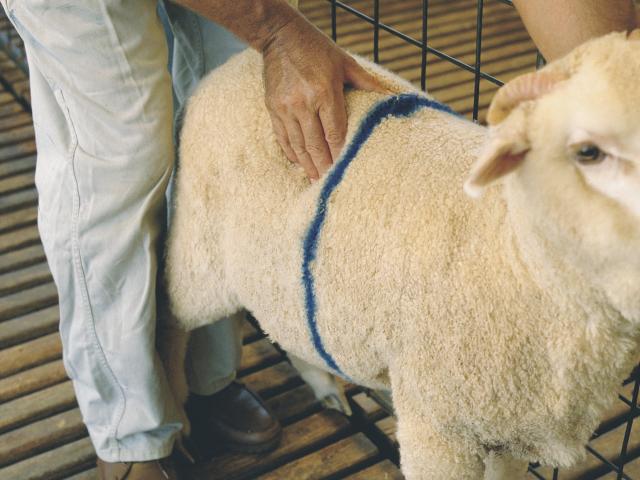
Sheep producers are being urged to monitor the condition score of their sheep and review supplementary feed needs in line with seasonal conditions.
Department of Agriculture and Food, Western Australia (DAFWA) Veterinary Officer Danny Roberts said condition scoring, by handling sheep, provided a good estimation of the nutritional wellbeing of the sheep by assessing the muscle and fat covering its backbone.
It is important to ensure individual sheep within the flock are above condition score 2.
There will be animals that vary within the flock so it is best to aim for an average condition score of 2.5 to ensure the ewes remain productive at mating.
Many producers in areas that have received below average rainfall are supplementary feeding sheep, as the animals’ energy intake from pastures is limited and the amount of food on offer continues to decline.
Weaning 10 to 12 weeks after the start of lambing would reduce the nutritional demand on the ewes and allow both the ewe and the lamb to be given sufficient feed more efficiently.
Weaned lambs will require sufficient energy to grow at 50 grams per day or 1.5 kilograms per month but the supplement needs to be at least 12% crude protein to ensure high survival rates.
Producers should be continually reviewing their feed budget as the season progressed to determine the amount of supplementary feeding required.
It is more cost effective to maintain the condition score of sheep at 2.5 than to lose it and try to regain it again before the next summer.
Producers should also consider future stocking rates and opportunities to capitalise on solid market conditions, should dry conditions prevail.
More information can be found at the DAFWA website:
- How to condition score sheep - video
- Supplementary feeding calculator for pregnant and lactating ewes
- Season 2017 webpage, which harnesses a range of livestock, agronomic and financial and wellbeing information.
For more information contact Dr Danny Roberts, Veterinary Officer, Albany on +61 (0)8 9892 8535.
New Development Officers to build capacity in grains research and development
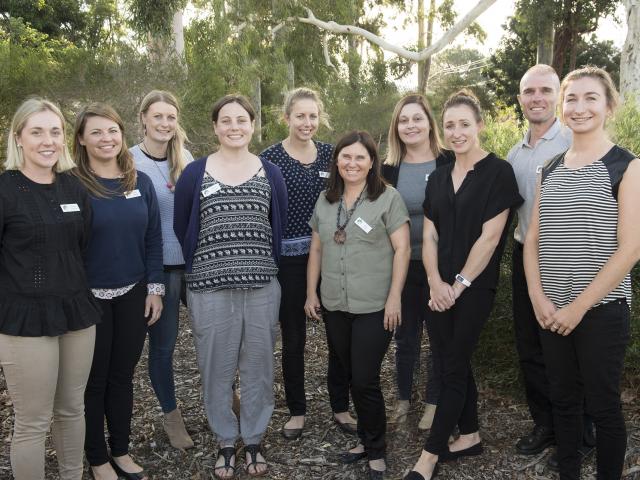
The Department of Agriculture and Food, Western Australia (DAFWA) now has on board a team of Development Officers to enhance the delivery of localised research and development for the Western Australian grains industry.
The appointments have resulted from the ‘Building crop protection and agronomy capacity in the Western Region’ project made possible by significant investment from DAFWA, the Grains Research and Development Corporation (GRDC) and Royalties for Regions’ Boosting Grains Research and Development project. The abbreviated title of the project is “Regional Research Agronomy’’.
The team consists of a Crop Production Research Agronomist and a Crop Protection Research Agronomist within each of the five Western Australian port zones, located at DAFWA’s regional offices of Geraldton, Merredin, Northam, Albany and Esperance.
Project Manager Vanessa Stewart said the Regional Research Agronomy project represents an interface between research and delivery and is designed to ensure that research and development outcomes hit the ground and result in improved farm profitability.
It will also play an important role in identifying emerging priority issues or regional gaps in existing research programs.
The officers are early entrants to the agriculture industry and this investment is also important in developing their capacity, providing a broad foundation for the next generation of grains industry professionals who will have the ability to innovate and create a progressive and dynamic sector able to meet future challenges.
The new Crop Protection and Crop Production Officers are:
Merredin
Jenni Clausen, Crop Protection +61 (0)8 9081 3184 or email.
Kylie Chambers, Crop Production +61 (0)8 9081 3117 or email.
Northam
Stacey Hansch, Crop Protection, +61 (0)8 9690 2168 or email.
Bec Swift, Crop Production +61 (0)8 9690 2081 or email.
The officers in each port zone will work closely with a range of industry support networks including the Regional Cropping Solutions Networks (RCSN), grower groups, agribusiness and other research providers to identify, facilitate, support and/or deliver activities aligned to key industry challenges and opportunities in their regions.
For more information contact Vanessa Stewart, Development Officer, Merredin, +61 (0)8 9081 3149.
Controlled Traffic Farming workshop
The Department of Agriculture and Food, Western Australia (DAFWA) will be hosting a Controlled Traffic Farming (CTF) Machinery Investment Planning workshop in Wyalkatchem in July.
Presented by DAFWA officers Bindi Isbister and Wayne Parker the workshop plans to guide participants through the process of developing a CTF system.
Open to farmers and consultants the workshop aims to help set short, medium and long term goals for individual farm businesses.
Topics covered will include:
- soil amelioration (what to rip and what not)
- CTF benefits and economics
- pros and cons of different machinery widths
- CTF case studies
- using the CTF calculator to begin a machinery investment plan.
Attendees are encouraged to bring along their operating width and tracks of machinery and a laptop/iPad to develop individual CTF investment plans.
The workshop will be held on the 18th July 2017 from 1pm-5pm at the Wyalkatchem Bowling Club.
Please RSVP to Wayne Parker, Research Officer, Geraldton on +61 (0)8 9956 8555 or Bernie Quade, Landmark on 0427 266 880.
Funding schemes to tackle pest threats
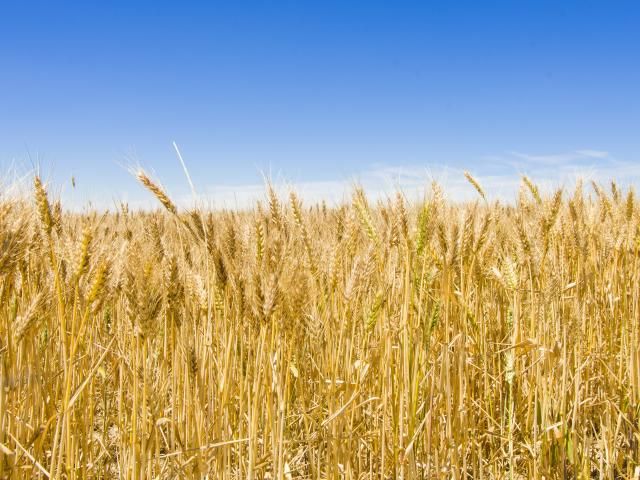
Farmer contributions to Industry Funding Schemes will support a range of priority animal disease and pest control programs next financial year.
The schemes operate across the sheep and goat, cattle, grains, seed and hay sectors in Western Australia, allowing industry to raise funds to address key biosecurity issues.
The 2017/18 contribution rates will remain unchanged for cattle, sheep and goats, while there has been a reduction for grains, seeds and hay.
Grain/seed contributions are being reduced from 30 cents on the first sale of every tonne of grain and seed to 25 cents.
Hay producer contributions will reduce from 15 cents on the first sale of hay to 12.5 cents.
The new contribution rates will come into effect from 1 July 2017.
With strong grains harvests in recent seasons, the funding scheme account balance for grains, seeds and hay has grown.
The new contribution rate will help ensure industry funds are put to use on the ground.
For the 2017/18 financial year funds will be used as follows:
Cattle
Producers will pay a 20 cent contribution on the sale of each animal/carcase to fund surveillance programs for bovine tuberculosis, enzootic bovine leucosis and Johne’s disease.
Sheep and goats
Producers will pay a 10 cent contribution on the sale of each animal/carcase produced within the state, to fund a program to control virulent footrot, including research into the effectiveness of a footrot vaccine.
Grains and seed
Producers will pay a 25 cent contribution on the first sale of every tonne of grain and seed grown within the South West Land Division, to fund continuing programs to control skeleton weed and eradicate three-horned bedstraw.
Hay
Producers will pay 12.5 cents per tonne on the first sale of hay grown within the South West land Division, to fund the skeleton weed and three-horned bedstraw programs.
Following discussions with the Minister for Agriculture and Food, the cattle, sheep and goat Industry Funding Scheme management committees are also examining the possibility for these schemes to address wild dog control during 2017/18, and will liaise further with producers about this.
Producers who wish to opt out of the schemes must submit a 2017/18 Notice of Opt Out form by 30 June 2017.
Producers that opt out lose all entitlements to assistance and compensation via the scheme.
More information is available on the Industry Funding Schemes page of the DAFWA website.
For more information contact Rebecca Heath, Industry Funding Scheme Executive Officer, Northam, on +61 (0)8 9690 2171.
Ensure livestock are fit for the journey
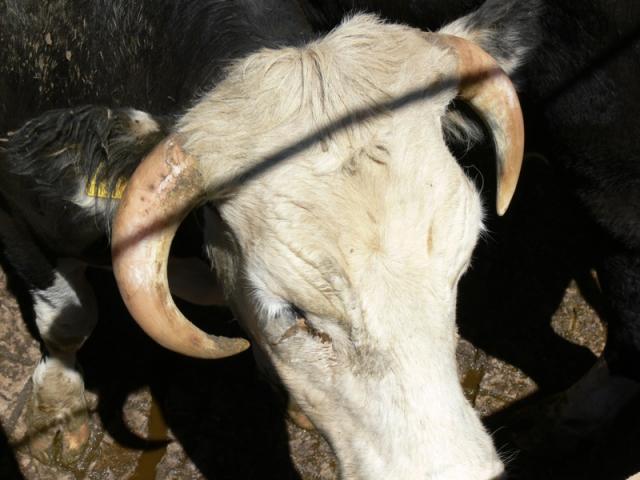
The Department of Agriculture and Food, Western Australia (DAFWA) is cautioning livestock agents, buyers and producers to ensure livestock being prepared for transport are fit to load.
Inspectors of the DAFWA Livestock Compliance Unit have recently dealt with incidents involving the transport of heavily pregnant animals, and an increase in the number of cattle and sheep arriving at saleyards with ingrown horns.
In these instances livestock are not fit to load.
Transporting animals in the late stages of pregnancy or recently born animals, where there is a risk of harm to the animal, is an offence under the Animal Welfare Act 2002.
Not knowing the animal was pregnant is not a defence. Agents, buyers and producers should be aware of the risk, and check each animal prior to transport.
Animals presented with an ingrown horn should also not be transported until they have had the horn trimmed and have recovered from any injuries as transporting animals in this condition could cause further suffering.
Ultimately, if there is any doubt about the condition of animals, they should not be accepted for transport.
DAFWA inspectors have noticed an increased prevalence of ingrown horns during inspections at saleyards and abattoirs over the past few months.
Trimming the horns of cattle and sheep should be standard practice, particularly in animals where there is a risk of the horn becoming ingrown. Trimming is a straight-forward procedure. If left untreated, the horns could eventually penetrate the animal’s skull.
If the horn has penetrated the skull, it should be trimmed in accordance with the advice of a veterinarian, or the animal should be humanely euthanised.
Failing to trim the horn is a possible offence under the Animal Welfare Act 2002 and carries significant penalties.
Animal welfare codes of practice in WA have been prepared to assist producers to make decisions on issues such as transporting pregnant livestock, and how to trim horns without cutting into sensitive horn tissue.
The Model Code of Practice for the Welfare of Animals: Cattle and the Code of Practice for Sheep in Western Australia can be downloaded from DAFWA’s website.
DAFWA is committed to providing leadership and improving animal welfare outcomes in WA.
The department administers the Animal Welfare Act, and ongoing monitoring and raising awareness of animal welfare legislation and standards is critical to achieving improved compliance with the Act.
Inspectors of the Livestock Compliance Unit play a vital role. At saleyards and other places where animals are brought together, inspectors carry out inspections and liaise with industry to educate and advise on animal welfare.
Inspectors can issue Direction Notices to keep any livestock unfit for transport at the saleyard for a specified period, which may mean agistment fees for the owner.
Inspectors may also initiate prosecutions for non-compliance.
Additional information about Animal Welfare is available on the DAFWA website.
For more information contact Jodie Gysen, Client Engagement Leader, South Perth on +61 (0)8 9368 3194.
Take your PIC…and renew on time
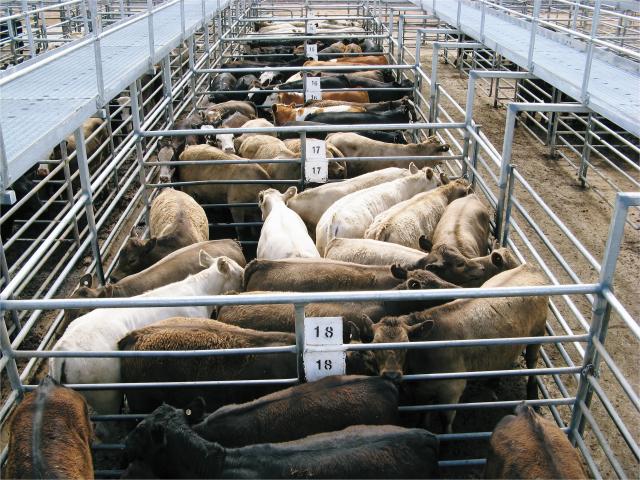
Livestock producers are reminded to make sure their stock brand and property identification code (PIC) registration is up to date to avoid delays at saleyards and processors.
Department of Agriculture and Food, Western Australia (DAFWA) Registrar of Stock and Apiaries reminds producers to renew their brand on time to avoid being automatically deregistered.
Without registration producers are unable to sell or move stock legally.
Recently, several consignments of stock have been delivered to saleyards and abattoirs where the brand and PIC had expired.
These stock cannot be moved or sold until the brand is renewed, creating considerable delay and inconvenience for both the owner and the saleyard or processor.
The DAFWA Brands office currently mails renewal notices to all registered producers five weeks before the registration expiry date.
From 1 July, producers will be given eight weeks notification.
In 2016, the Brands office processed 6808 registration documents, including new registrations, re-registrations, transfers, cancellations and property detail amendments.
An additional 6433 renewal notices were issued.
Almost half of these renewals had to be issued a second notice as registered owners failed to pay the renewal fee before the PIC expiry date.
This equates to 50% of the year’s PIC renewals with a potential ‘urgent’ need for processing.
This creates processing bottlenecks and subsequent problems with consignments from expired PICs arriving at the saleyard or processor.
To ensure they receive their renewal notice, PIC owners are reminded to update their postal details within seven days of any change of address as is required by the legislation.
Re-registrations can be returned by post or email.
Every PIC is published on the National PIC Register and is used by the Livestock Production Assurance (LPA) program to accredit producers to use the commercially required suite of National Vendor Declarations (NVDs).
If a producer hasn’t paid their livestock owner registration renewal fee on time, their PIC will be deregistered, with both the department and LPA.
This means they can’t use an NVD and the PIC won’t be recognised by saleyard and abattoir operators.
Upon renewal, the producer is required to contact LPA and request their PIC be reinstated on the accredited list.
The LPA NVD waybill is an industry-driven initiative to assure Australia’s domestic and export markets of the safety of Australian beef, lamb and goat meat.
PIC owners are urged to be patient as the re-registration process is not instantaneous.
To check the expiry date of a PIC or update details, producers can enter the code in the Brands - Property identification code enquiry page.
Adding or removing a property to a registration at any time is free of charge.
To check LPA accreditation contact 1800 683 111 or go to Livestock Production Assurance to plug in your PIC.
Other useful pages on the DAFWA website include:
- Livestock ownership, identification and movement in Western Australia
- Registering as an owner of stock or as a beekeeper
For more information contact Beth Green, NLIS Operations Manager, Bunbury on +61 (0)8 9753 0302.
Weather data strengthened across wheatbelt
Wheatbelt growers and industry representatives were joined by Agriculture and Food Minister Alannah MacTiernan for the official opening of the Doppler weather radar site at Watheroo, north-east of Moora.
The State Government’s investment in the suite of Doppler radar towers (Newdegate, South Doodlakine and Watheroo) to improve regional weather information, complement the Bureau of Meteorology's (BoM) radar network to provide farmers and regional residents localised, real-time rainfall and wind events.
Technology is integral to ensuring Western Australia’s agricultural sector remains internationally competitive and Doppler radars will help to increase agricultural productivity and better enable farm business decision making.
Combining Doppler radar data with data from the department's network of more than 175 weather stations (129 across the grainbelt) provides vital information to boost the performance of farm business operations.
Using the data generated by the radars, farm businesses will be able to save time and money to support farm management decisions such as time of sowing and fertiliser and chemical applications.
Real-time rainfall and wind information from the Doppler radars are updated every six minutes on the department and BoM websites. This data can be 'pin-pointed' to a one-kilometre resolution, giving farmers a 'paddock perspective' of real-time and estimated accumulated rainfall.
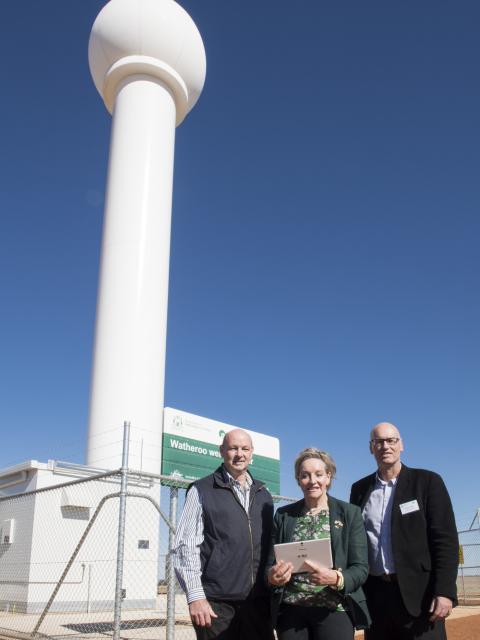
Data from the newly installed radars will feed into online decision support tools (eg. Soil water tool, Rainfall to date) to support growers to make more informed decisions throughout the season to maximise opportunities and minimise risks.
To complement this expanded weather radar coverage across the grainbelt, existing BoM weather radars at Geraldton, Esperance and Albany are all being upgraded to Doppler capability.
The State Government is funding Geraldton and Albany based radars, and Esperance will be funded by the Bureau. The upgrade of these coastal weather radars are planned for completion by April 2019.
Once the coastal radar upgrade is complete the Western Australian wheatbelt will have the most comprehensive weather network in the southern hemisphere.
To access more precise weather information, visit the Department weather site and click on the ‘Rain radar’ tab.
AgMemo set to change
AgMemo is evolving to an industry focussed state-wide publication that provides essential, timely and relevant information to assist you in managing and developing your business.
Since its initiation, AgMemo has regularly delivered bi-monthly editions specific to five agricultural regions throughout Western Australia (Southern, South West, Central, Northern and Rangelands).
In a bid to improve the way we deliver messages to subscribers we will be changing the focus from region to industry.
The main body of the newsletter will promote our department’s achievements and projects and provide timely messages that are relevant to the majority of subscribers.
Readers can then select their relevant industry (grains, livestock or horticulture) for targeted articles providing a mix of timely strategic and tactical information, issues and news.
Another exciting new feature will be a regular section listing upcoming industry funding, scholarships and events.
The newsletter will continue to be published every two months as an e-newsletter sent directly to your inbox.
The next edition you receive will be published in the new format.
The AgMemo team welcome feedback and ideas from subscribers highlighting current issues and topics that they would like to see published in the newsletter.

